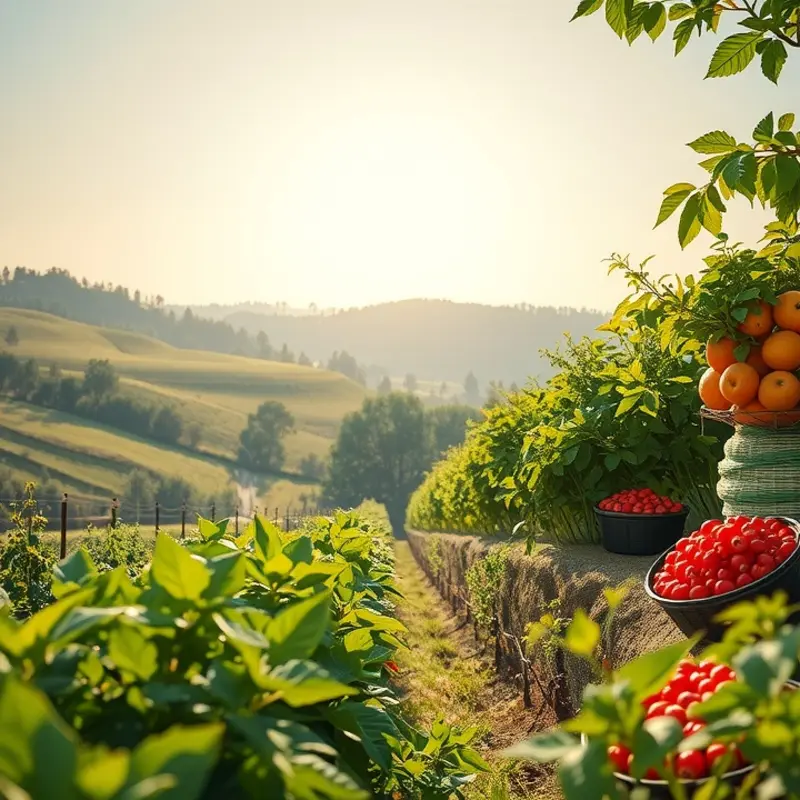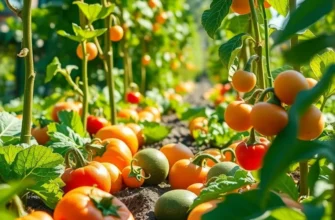Food is not just a source of nourishment; it is a vibrant tapestry of history and culture. Each dish tells a story of the land, the people, and the traditions that shape our world. From the spices of the East to the hearty stews of the West, culinary practices offer a rich perspective of cultural heritage, inviting food enthusiasts and culturally-curious readers alike to explore and appreciate global cuisines. Join me on a savory adventure, where each bite brings us closer to understanding the diverse culinary traditions that enrich our lives.
From Farm to Table: The Roots of Culinary Traditions

Diving into the depths of global culinary practices reveals a tapestry woven from local ingredients, traditional methods, and community interactions. The journey from farm to table is more than just a logistical process; it’s a cultural symphony where climate and geography dictate the rhythm.
Each region’s climate plays a critical role in defining its ingredients. The fertile plains of Italy are renowned for bountiful wheat harvests, which manifest in myriad pasta varieties. In contrast, the arid landscapes of the Middle East see the prominence of hardy grains like barley and wheat, fundamental for dishes like tabbouleh and kibbeh.
Local ingredients often dictate traditional recipes that become cornerstones of cultural identity. In Japan, the cool waters and temperate climate favor rice and freshwater fish, leading to the celebrated sushi. Meanwhile, the Mexican highlands, with their unique soil, yield the distinct spices and corn, forming the backbone of traditional tacos and tamales.
Traditions of cooking and preparation methods are vital in converting these raw ingredients into beloved dishes. In India, the practice of slow-cooking spices in oil is a technique handed down through generations, enhancing aromatic flavors that define curries across the subcontinent. Similarly, the method of fermenting cabbage to create kimchi in Korea is not only about preservation but also cultural continuity, bridging generations through shared practice.
Community and family influence shape culinary traditions, with many practices centered around communal eating. In Ghana, meals are typically shared from a communal bowl, fostering unity and a sense of belonging. This is mirrored in the Mediterranean meze, where sharing intricate small dishes is an expression of community and hospitality.
Key dishes and ingredients from various cultures hold profound significance. In Ethiopia, injera, a sour flatbread, is both a staple and a plate, representing resourcefulness. Similarly, the olive, rooted in Mediterranean history, symbolizes peace and sustenance, playing a central role in diets from Greece to Spain.
The global exchange of culinary influences is indeed a vital part of this dialogue, as explored in this article on culinary influences through trade. The adaptation of local practices by incorporating external influences continues to enrich cultural heritage.
Understanding these traditions requires us to see beyond the flavors and into the stories they narrate—silent chronicles of the land and its people. It is this heritage, preserved and celebrated, that enriches our global culinary journey.
Flavors of the World: Culinary Practices that Tell a Story

In exploring the rich tapestry of global culinary heritage, we find dishes that are not just food; they are narratives and traditions on a plate. Each bite invites us into the past, offering a glimpse into the culture and history of a region.
Consider Mexico’s mole, a rich, complex sauce that, much like the country’s history, blends influences from various cultures. With origins tracing back to pre-Hispanic times, mole’s story is one of resilience and fusion. The vibrant spice mix, often including chocolate, is a symbol of culinary artistry passed down through generations. Mole is a centerpiece during significant celebrations like weddings and festivals, where family members gather to create it, reinforcing culinary bonds and preserving cultural continuity.
Moving to Asia, sushi offers a minimalist yet profound narrative of Japanese values. The delicate balance of rice, fish, and seaweed embodies the Japanese aesthetic of simplicity and perfectionism. Sushi began as a method of preserving fish, evolving over centuries into the refined cuisine we know today. It is shared among friends and family, often during celebrations, and enjoyed at local sushi bars where the community congregates, turning dining into an artful and communal experience.
Italy’s risotto provides yet another tale, one that reflects the adaptability and innovation of its people. Originating from the Northern regions, risotto is a creamy rice dish that showcases the Italian philosophy of using quality ingredients to elevate simple meals. It brings families together around the dining table, highlighting the importance of food in social and familial structures. Risotto is particularly significant during holidays and noteworthy events, offering comfort and familiarity through each savory spoonful.
Crossing to Africa, Ethiopia’s injera is more than just a staple food; it is an instrument of socialization. This spongy, sourdough flatbread is used as both a plate and utensil, symbolizing the communal nature of Ethiopian dining. Meals are shared from a central platter, with diners scooping stews with pieces of injera, fostering unity and connection. Injera plays a crucial role during communal events and religious celebrations, reaffirming social bonds and celebrating hospitality.
The stories of these dishes underline the shared human experience of culinary diversity. They remind us that while ingredients and methods may vary, the core intent of bringing people together remains universal. As we savor these flavors and embrace the rich narratives behind each dish, we participate in a timeless tradition that unites us across cultures and generations.
For additional insights into how trade has influenced global culinary traditions, explore culinary influences through trade.
Final words
Food is a powerful connector of people and cultures. It encapsulates history, community, and shared experiences, which are at the heart of cultural heritage. As we savor each dish, we are also consuming the stories of those who came before us—stories of love, hardship, joy, and identity. By immersing ourselves in diverse culinary traditions, we not only expand our palates but also foster greater understanding and respect for cultures around the world. As you embark on your next culinary adventure, remember that each flavor is a page in the story of humankind, waiting to be told and shared.








